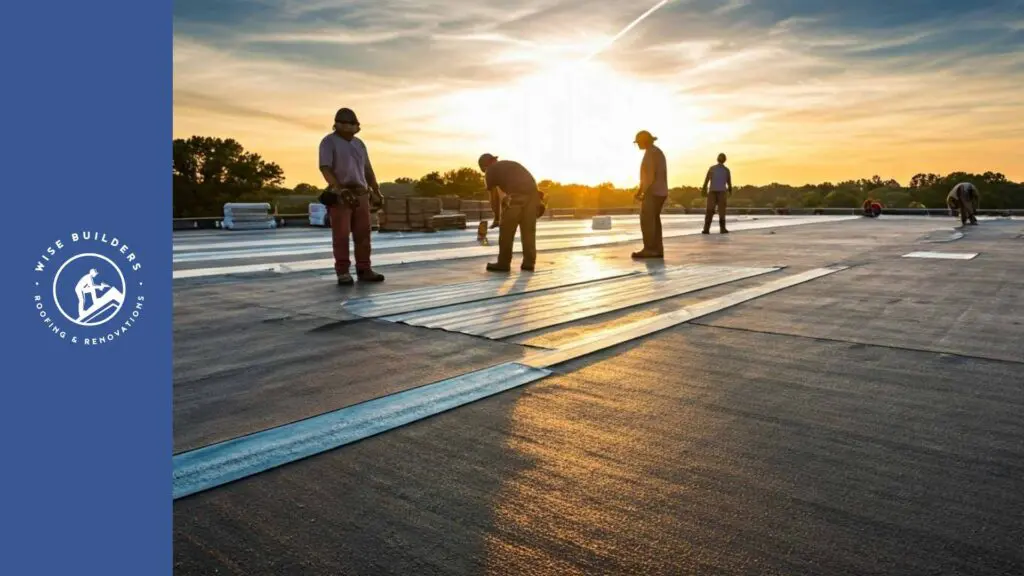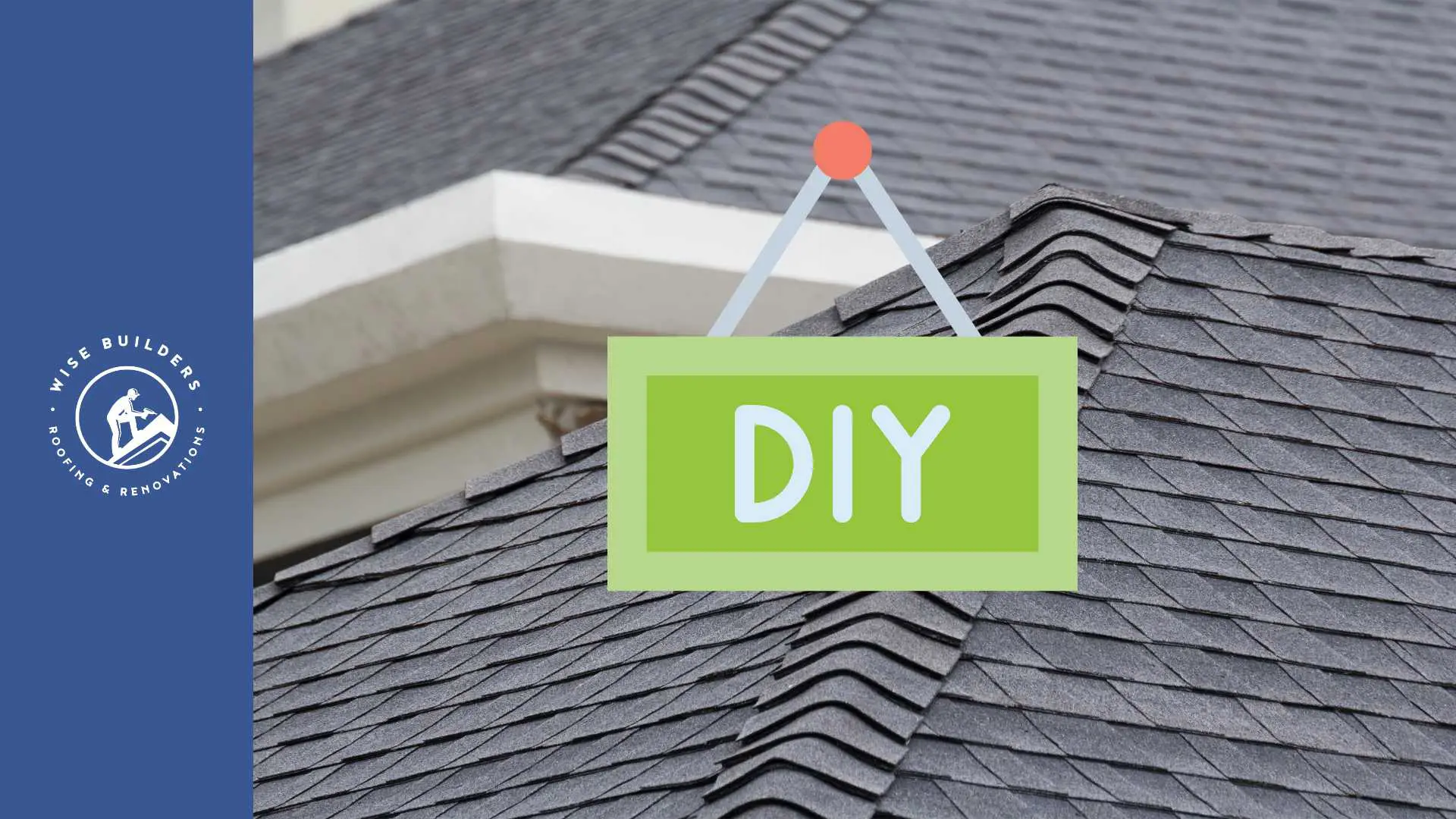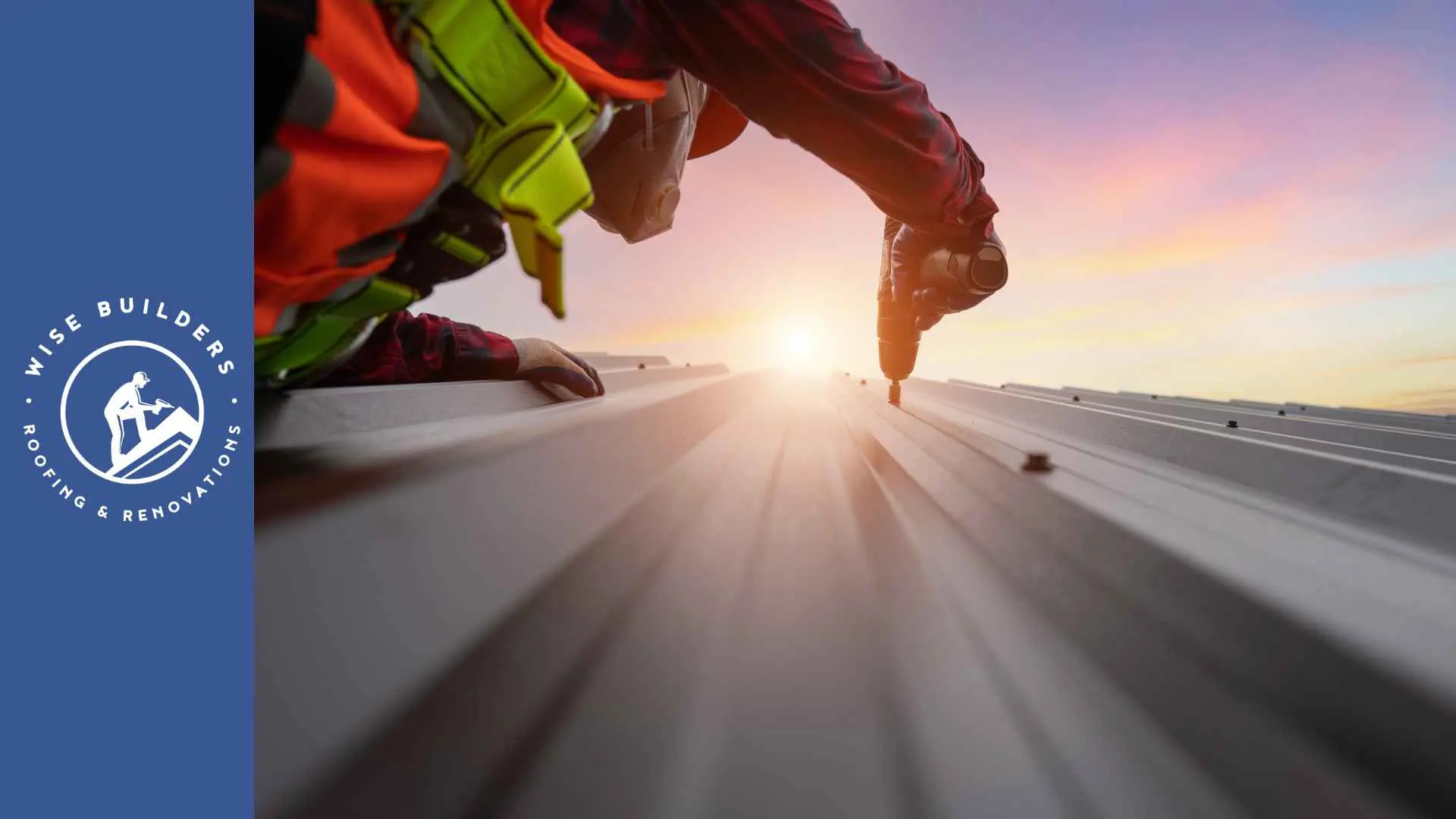
Key Highlights
- Commercial roofs are a crucial part of any business, providing protection from the elements and impacting energy efficiency.
- Choosing the right roofing system depends on several factors like the building’s structure, local climate, and budget.
- Popular commercial roofing materials include metal, built-up roofing, modified bitumen, EPDM, PVC, and TPO, each having pros and cons.
- Green roofs and solar panels are eco-friendly options for commercial buildings.
- Regular inspection and maintenance can significantly extend the lifespan of your roof and prevent costly repairs.
Introduction
In the world of commercial real estate, a well-maintained roof is paramount. A sturdy and efficient commercial roofing system is not just about protecting the building and its contents; it plays a significant role in energy efficiency and overall operational costs. Understanding the nuances of commercial roofing, the variety of materials available, and the importance of regular maintenance is essential for any commercial building owner.
Understanding Commercial Roofing Systems
Unlike residential roofs that often prioritize aesthetics, commercial roofing focuses primarily on functionality, durability, and cost-effectiveness. Factors such as the building’s design, local weather patterns, and the intended use of the roof space all play into determining the best type of commercial roofing system.
Navigating these options requires understanding the different types of commercial roof systems, their strengths, and limitations to make informed decisions for your property.
Importance of Selecting the Right Material
Selecting the right roofing material is crucial for the longevity and efficiency of your commercial roof. The wrong choice can lead to premature deterioration, leaks, increased energy costs, and ultimately, expensive repairs or replacements. Understanding which roofing material is the best choice ensures you avoid these issues.
Firstly, consider the climate. A region with heavy snowfall will have different needs than one with intense sun exposure. Roofing systems must be chosen accordingly, emphasizing resistance to specific weather conditions.
Further, understanding the lifespan of different roofing materials, their maintenance requirements, and their compatibility with the building’s structure is vital for maximizing the return on your roofing investment. A well-chosen roofing system will provide long-term protection and contribute to the entire roof’s overall energy efficiency of your building.
Overview of Roofing System Types
The roofing industry offers many options, each with pros and cons. Understanding the most common commercial roofing systems will help you make an informed decision.
Single-ply roofing, using materials like TPO, PVC, and EPDM, is favored for its flexibility, durability, and relative ease of installation. These systems are known for their waterproofing abilities and resistance to UV damage.
Another common type of roof is the modified bitumen roofing system. This system involves layering asphalt and rubber or plastic, making it resistant to extreme weather conditions and punctures.
Choosing the right type of roof for your commercial building is a decision best made with careful consideration of your specific needs and in consultation with experienced commercial roofing professionals.
Popular Materials Used in Commercial Roofing

Commercial buildings often feature low-slope or flat roofs, demanding durable and weather-resistant materials. These materials need to withstand harsh weather conditions, heavy foot traffic, and potential UV damage.
Let’s look at some of the most popular materials used in commercial roofing, their benefits, and potential drawbacks.
Metal Roofing: Durability and Longevity
Metal roofing, particularly using materials like stainless steel, is a popular choice for its exceptional durability and longevity. Metal roofs are known to withstand harsh weather, are fire-resistant, and require minimal maintenance. They can last upwards of 50 years, making them a cost-effective choice in the long run.
Furthermore, metal roofs are highly reflective, reducing cooling costs in warmer climates. Their lightweight nature also puts less stress on the building’s structure.
However, the initial cost of metal roofing can be higher than other options. It’s important to source high-quality materials and skilled labor for proper installation to avoid potential issues with rust or leaks.
TPO and PVC Membranes: Reflectivity and Energy Efficiency
TPO roofing and PVC roofing are popular single-ply membrane roofing systems used in industrial buildings, known for their energy efficiency and cost-effectiveness. These materials have high reflectivity, minimizing heat absorption, especially beneficial in warmer climates.
TPO, or Thermoplastic Polyolefin, is a blend of rubber and synthetic components. It’s known for its flexibility, UV resistance, and welding capabilities, ensuring strong seams and a watertight seal.
On the other hand, PVC, or Polyvinyl Chloride, is a highly durable material resistant to chemicals, fire, and punctures. PVC roofing offers long-term performance and is known for its resistance to ponding water.
Both TPO and PVC offer considerable energy efficiency benefits, contributing to lower cooling costs and a smaller environmental footprint.
Innovative Roofing Systems for Commercial Buildings

As technology advances, so do roofing solutions. Beyond traditional materials, innovative systems cater to the evolving needs of commercial buildings, focusing on sustainability and energy efficiency.
From green roofs to solar panel integration, let’s explore the possibilities of these cutting-edge roofing solutions.
Green Roofing Solutions: Environmental Benefits
Green roofs are gaining popularity as a sustainable roofing option offering numerous environmental benefits. A green roof system involves installing a waterproof membrane, drainage system, and growing media, allowing vegetation to thrive on the rooftop.
The presence of vegetation provides natural insulation, reducing energy costs by mitigating temperature fluctuations within the building. Additionally, vegetative roofing systems absorb rainwater, alleviating stress on drainage systems and reducing the “heat island” effect in urban areas.
However, green roofs require careful planning and installation to ensure proper drainage and waterproofing. Regular maintenance is essential for the health of the vegetation and the long-term performance of the roof.
Solar Roofing Systems: Integrating Renewable Energy
Integrating solar panels into commercial roofing is a smart investment, offering both economic and environmental benefits. Solar panels directly convert sunlight into electricity, providing a renewable energy source for the building.
By generating their electricity, businesses can significantly reduce energy costs and their dependence on traditional power grids. Additionally, using renewable energy contributes to a smaller carbon footprint, aligning with sustainability goals.
While the initial investment for a solar roof can be significant, various financial incentives and rebates are available to offset the cost. With the long-term savings on electricity bills, solar roofing offers an attractive return on investment and promotes environmental responsibility.
The Role of Insulation in Commercial Roofs
While the choice of roofing material is important, underestimating the importance of proper insulation in commercial buildings can undermine the effectiveness of even the most robust roofing system.
Insulation plays a vital role in regulating temperature, preventing energy loss, and protecting the building’s interior.
Types of Insulation Materials
The market offers a variety of insulation materials, each with different properties and suitability for commercial roofing. Common options include fiberglass, mineral wool, polyisocyanurate (polyiso), and expanded polystyrene (EPS).
Fiberglass is cost-effective and offers good thermal resistance but requires careful handling due to potential irritation. Mineral wool provides excellent fire resistance and sound absorption, making it suitable for areas with specific safety regulations.
Polyiso is known for its high R-value, offering exceptional thermal performance per inch. In contrast, EPS is lightweight and moisture-resistant, making it ideal for applications requiring moisture control.
Selecting the right insulation depends on factors like budget, climate, and specific building requirements.
Benefits of Proper Roof Insulation
Investing in proper roof insulation yields significant benefits for commercial buildings, improving energy efficiency, comfort, and overall building performance. A well-insulated roof system acts as a barrier, preventing heat transfer between the interior and exterior environments.
By minimizing heat gain during summer and heat loss during winter, insulation dramatically reduces the workload on HVAC systems, leading to significant energy efficiency improvements and lower energy bills. Moreover, it helps maintain a consistent indoor temperature, enhancing occupant comfort.
Proper roof insulation also contributes to a healthier indoor environment. It helps prevent condensation, reducing the risk of mold growth and improving indoor air quality. For commercial roofing, insulation is a crucial investment with long-term benefits.
Maintenance and Repair of Commercial Roofs
Even with durable materials and expert installation, commercial roofs require regular maintenance to ensure longevity and optimal performance. Neglecting roof maintenance can lead to minor issues escalating into significant problems, resulting in costly repairs or premature roof replacement.
Proactive maintenance extends the life of your roof and helps identify potential issues before compromising the building’s integrity.
Regular Inspection and Maintenance Tips
Regular inspections by a qualified commercial roofing contractor are crucial for identifying and addressing potential problems before they escalate into major repairs. A well-maintained roof can last significantly longer, saving you money in the long run.
Schedule professional inspections at least twice a year, ideally in spring and fall. During these inspections, the contractor will check for damage, debris, and signs of wear and tear. They will also assess the condition of the flashing, seams, and drainage systems.
Additionally, it’s good practice to visually inspect your roof after severe weather events like storms or heavy snowfall. Promptly address any damage, however minor, to prevent leaks and further deterioration. Implementing a proactive maintenance plan ensures the longevity and optimal performance of your roof system.
Identifying and Addressing Common Issues
Timely identification and addressing of common issues are crucial to prevent minor problems from escalating into major repair or roof replacement projects. Understanding the typical culprits behind roof damage can help building owners take proactive measures.
Ponding water, often caused by poor drainage, can weaken the roofing membrane over time leading to leaks. Similarly, damaged flashing, the material sealing joints and edges, is a common entry point for water. Regularly inspecting and maintaining these areas can prevent significant water damage.
Cracks, blisters, or punctures in the roofing membrane require immediate attention. While minor repairs might suffice in the early stages, neglecting such issues can necessitate extensive repair work or complete roof replacement down the line.
Conclusion
In conclusion, selecting the right materials and systems for commercial roofs is crucial for their longevity and energy efficiency. Metal roofing offers durability, while TPO and PVC membranes provide reflectivity and energy efficiency. Innovative solutions like green and solar roofing contribute to environmental benefits and renewable energy integration. Proper insulation plays a significant role in maintaining optimal temperature levels inside commercial buildings. Regular maintenance and timely repairs are essential to ensure the durability and functionality of commercial roofs. By prioritizing quality materials and systems, you can enhance the sustainability and performance of commercial roofing structures for years to come.
At Wise Builders, We ensure our clients receive the best possible outcomes. Our commitment to quality workmanship and customer satisfaction is unwavering, making us the top choice for residential Roofing services in our community.
Frequently Asked Questions
What is the Most Cost-Effective Material for Commercial Roofing?
Determining the most cost-effective option requires considering the lifespan and maintenance costs alongside the initial investment. While some commercial roofing materials might have a lower upfront square foot cost, others, like metal, offer exceptional longevity and minimal maintenance, potentially making them the best option for business ownersseeking long-term value.







